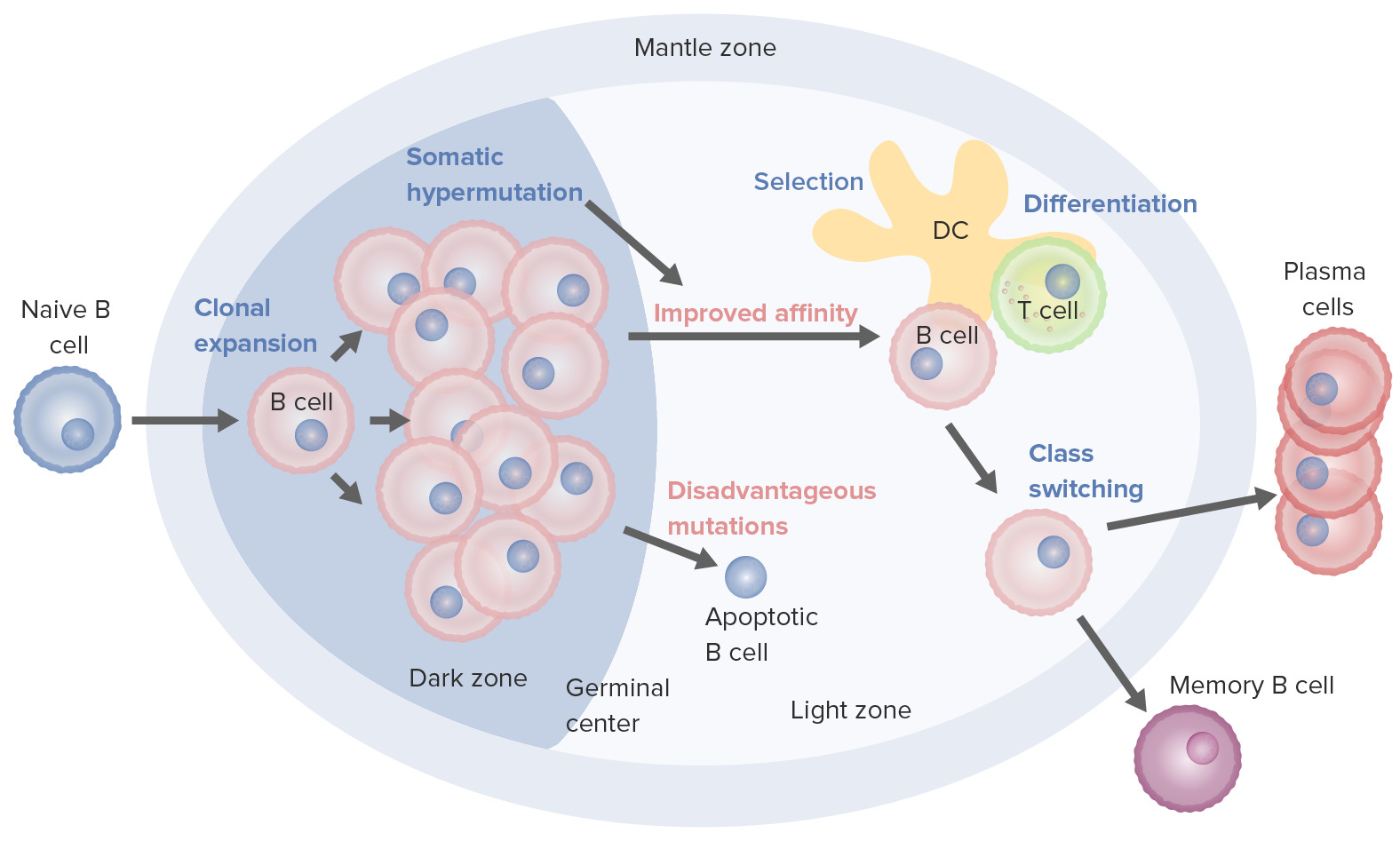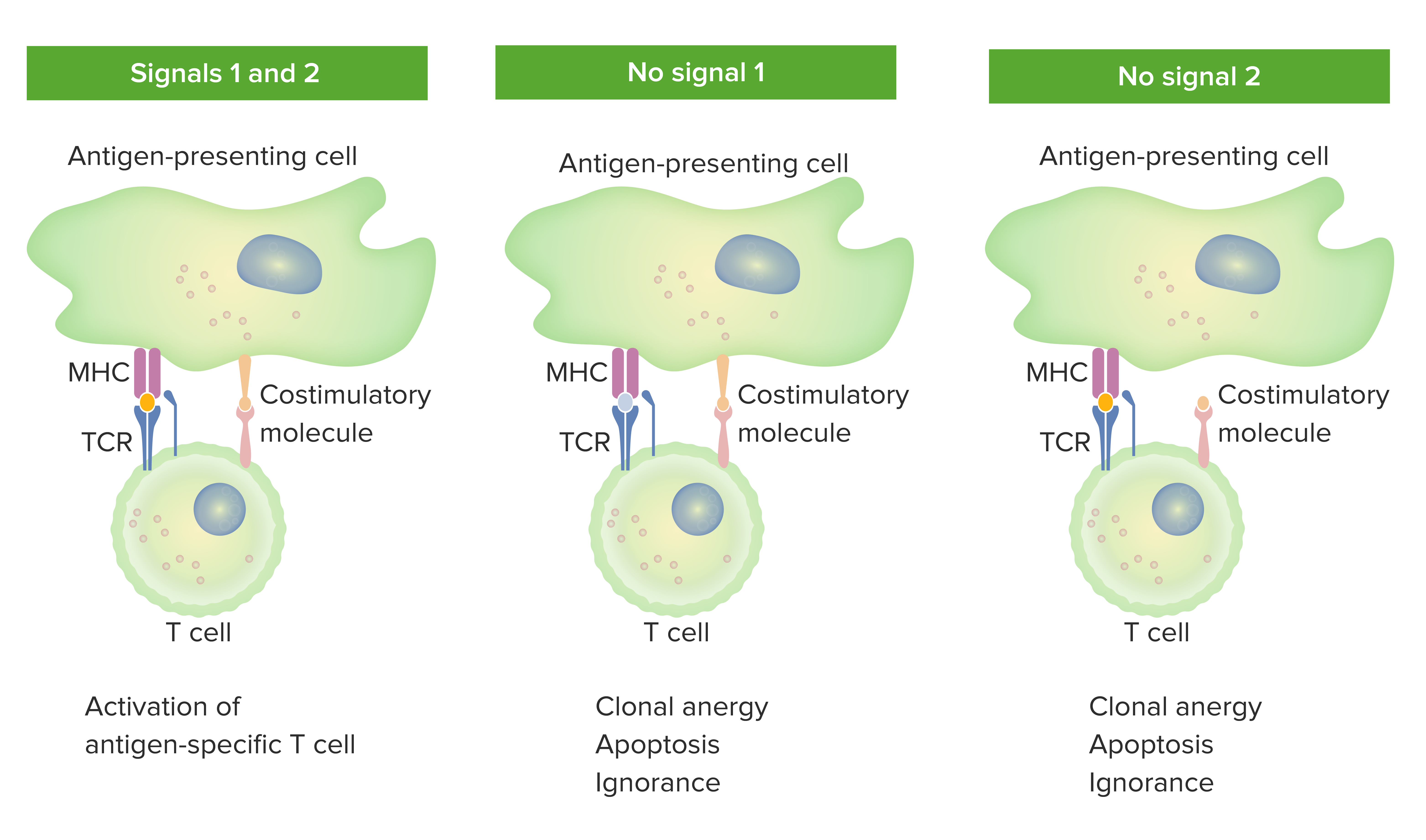Playlist
Show Playlist
Hide Playlist
Organization of the Immune System
-
01 Slides Overview Immune System.pdf
-
Reference List Immune System.pdf
-
Download Lecture Overview
00:01 So, because there are all these different strategies, the immune response needs to coordinate its strategy. 00:08 And of course the immune system is not like people. 00:10 It doesn’t have a brain, it doesn’t think in the way that you and I can think. 00:15 But you can use this analogy: a group of individuals getting together and discussing what is going to be the best way of dealing with a particular type of pathogen. 00:25 And essentially, this is what cells of the immune system do. 00:28 They get together particularly in the secondary lymphoid tissues and they work out what is going to be the best strategy to deal with a particular pathogenic threat that is present. 00:39 Once that strategy is agreed upon, there are orders given and cells will be sent out from the secondary lymphoid tissues to go to the place where the infection is. 00:52 And molecules will be released that can also distribute themselves via the lymphatic system and via the blood circulation to go to the location where the pathogen is. 01:04 So the troops are dispatched from the secondary lymphoid tissues, and they will hopefully be successful in defeating the enemy. 01:17 So how does this coordinated response actually work in practice? You may be wondering, well that’s all very well, but how does it really work? Well, there needs to be communication very clearly and we can break down communication in the immune response into two fundamentally different ways of interacting. 01:37 Different cells of the immune response interacting with each other. 01:40 One is where molecules on the surface of one cell recognize molecules on the surface of another cell, and following this mutual recognition, signals are sent into either one of the cells or very often into both cells causing cell activation. 01:59 So this is a cell-cell contact dependant interaction. 02:03 If you have a molecule on the surface of one cell binding to the molecule on the surface of another cell, clearly those two cells have to be in cell contact. 02:13 That’s not the only way in which cells of the immune response interact with each other. 02:18 Second way is that they can interact via the secretion of molecules. 02:24 So, one particular cell of the immune response will release molecules that are detected by receptors for those molecules on the surface of another cell. 02:34 And we can see that very clearly on this particular slide. 02:43 So, via these cell-cell contact dependant mechanisms and via the release of soluble molecules, a coordinated response can be generated which hopefully will eliminate the pathogen. 02:57 But we don’t want the response to carry on forever and ever. 03:00 I mean once the pathogen has been cleared, if you have a cold for example, and you’re infected with the cold virus, once the immune response has done its job you don’t want the response against the cold virus to carry on and on. 03:12 And the same of any other type of infection. 03:15 So, there needs to be some way of dampening down the immune response or ceasing the immune response once the pathogen has been eliminated. 03:26 Now to a great extent, that actually happens because antigen drives the immune response. 03:33 In other words, the pathogen is actually what is stimulating the immune response. 03:37 If the response is successful, you eliminate the pathogen. 03:42 So there’s no longer this drive on the immune response. 03:45 It’s a bit like the accelerator in a car, you have your foot on the accelerator. 03:49 If you take your foot off the accelerator, then the car will slow down. 03:53 It’s a little bit like that with an infection. 03:55 Once the infection is gone, then it’s like the foot no longer being on the accelerator. 04:00 So, if the response is successful, the stimulus is eliminated and therefore there is no longer that antigenic stimulation of the response. 04:11 However, there’s also additional mechanisms that suppress the residual immune response. 04:20 So we have what are called regulatory cells that make sure that once the response is no longer required, it’s finished with. 04:30 And then the immune response can go on and deal with other pathogens that may come along next week. 04:34 Maybe you had a cold this week, that’s fine, you got rid of that. 04:38 But maybe next month you’ll get a sore throat and you need the immune response to focus its efforts on getting rid of the sore throat infection. 04:45 So I hope you have enjoyed listening to this session and that you have learnt some of the basics of the immune response, and can go on and now learn in more detail about the different cells and molecules that have evolved to protect us from infection.
About the Lecture
The lecture Organization of the Immune System by Peter Delves, PhD is from the course Immune System: Overview and Cells.
Included Quiz Questions
Which of the following is a main type of interaction between cells of the immune system?
- Binding of a ligand on one cell to the receptor on the other
- Apoptosis
- Binding of a ligand on one cell to the nucleus of another cell
- Secreted molecules from one cell altering nuclear DNA of another cell
- Phagocytosis
What is the initial trigger of an immune response to a virus?
- Detection of the presence of a pathogen
- Secretion of molecules from an immune cell that recruit other immune cells
- Response by the adaptive immune system
- Secretion of molecules from an immune cell that destroy the infected cell
Cessation of the immune response is usually mainly a result of?
- Elimination of the pathogen
- Damage-associated molecular patterns
- Regulatory cells that suppress immune response
- Pathogen-associated molecular patterns
- Release of Interleukin 10 and transforming growth factor beta
Customer reviews
5,0 of 5 stars
| 5 Stars |
|
2 |
| 4 Stars |
|
0 |
| 3 Stars |
|
0 |
| 2 Stars |
|
0 |
| 1 Star |
|
0 |
Great communication skills, very didactic. Sometimes, when a person knows a lot, he or she do not have the ability to pass that information forward, but this professor does it really well.
I enjoyed many other lecture series here on Lecturio, but thus far, immunology is my favourite and this is purely due to Dr. Delves. Following Immunology studies in medical school, I greatly tested it, but after listening to only a few of his lectures, I've not only learned to love immunology, but I'm excited to dive into it further. Thank you.






